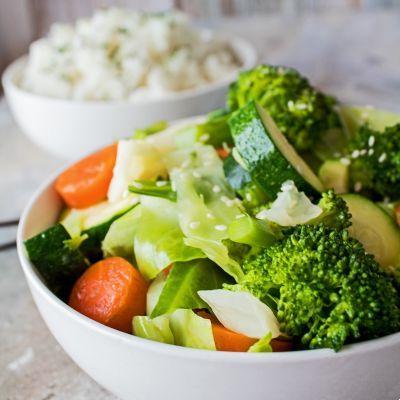
Cabbage: few calories, many vitamins
With the term cabbage all those vegetables that belong to the Brassica variety of the cruciferous family are defined. Of this variety, only the leaves are consumed, as in cabbage black or in cabbage, or the inflorescences not yet fully ripe, as for broccoli or cauliflower.
The beneficial properties of cabbage are really many and thanks to large amount of iron, vegetable calcium e mineral salts they stand out for being among the most nutritious vegetables that can be found.
All the varieties belonging to this family can also be defined as natural anti-inflammatories and thanks to presence of omega 3 and fibers allow to counteract heart and digestion problems.
Though cabbage is low in calories, has an impressive nutritional profile.
In fact, just 1 cup (89 grams) of raw green kale contains:
> Calorie: 22
> Protein: 1 g
> Fiber: 2 g
> Vitamin K: 85% of the RDI
> Vitamin C: : 54% of the RDI
> Folate: 10% of the RDI
> Manganese: 7% of the RDI
> Vitamin B6: 6% of the RDI
> Soccer: 4% of the RDI
> Potassium: 4% of the RDI
> Magnesium: 3% of the RDI
Cabbage also contains small amounts of other micronutrients, including Vitamin A, iron and riboflavin.
As you can see in the list above, this vegetable is rich in vitamin B6 and folic acid, both of which are essential for many important processes in the body, including energy metabolism and the normal functioning of the nervous system.
Broccoli: a concentrate of quality
Our parents were right in our childhood to include broccoli in our diet. Much hated by the little ones, actually this vegetable turns out to be a real concentrate of nutritional properties.
It is known to promote digestion, the cardiovascular system and the immune system, and to have anti-inflammatory and even anticancer properties.
There are also phytochemicals and antioxidants: phytochemicals are chemicals present in plants responsible for color, smell and taste, useful for immune system. They include glucobrassicin, carotenoids, such as zeaxanthin and beta-carotene.
Broccoli is one good source of lutein, an antioxidant and sulforane compound, with a strong antioxidant power; they also contain additional nutrients, including small amounts of magnesium, phosphorus, zinc and iron.
Tips on cooking
Excessively prolonged cooking, in addition to destroying most of the vitamins, makes cabbages indigestible and unpleasant odor due to the greater release of sulfur compounds.
Fundamental is cut these vegetables into thin strips before cooking to avoid the goitrogen effect which makes them contraindicated in thyroid problems.
It is important to know that if steamed they have a fluidifying power, while if cooked in oil they are blood coagulants. There vitamin k (a fat-soluble vitamin with a coagulating effect) becomes more bioavailable thanks to the oil as a carrier.
Foods rich in vitamin K hinder the effect of anticoagulant drugs such as coumadin, therefore in case of therapy with the drug they should be consumed sporadically or in any case limited.


























